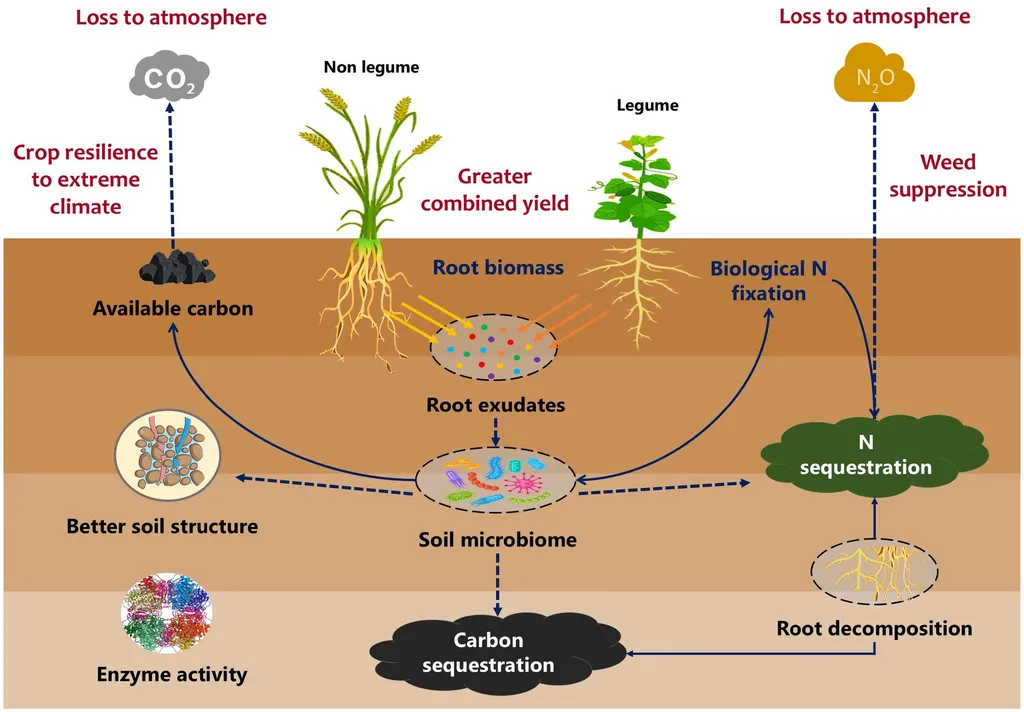In the heart of Morocco, researchers are uncovering a novel approach to bolstering crop resilience, with implications that could ripple through the agricultural and energy sectors. Aiman Slimani, a scientist at the University Mohammed VI Polytechnic (UM6P) in Ben Guerir, and his team have been exploring the synergistic effects of intercropping and plant growth-promoting microbes (PGPM) to combat drought and salt stress. Their findings, published in the journal ‘Frontiers in Plant Science’ (which translates to ‘Frontiers in Plant Science’ in English), offer a promising avenue for sustainable agriculture in arid regions.
The study focused on the interplay between alfalfa and barley, two crops with distinct growth patterns and nutrient requirements. By combining these crops and introducing PGPM along with compost, the researchers aimed to enhance the plants’ ability to withstand environmental stresses. “We were particularly interested in understanding how these associations could influence the plants’ physiology and their interaction with beneficial microbes in the rhizosphere,” Slimani explained.
The results were striking. When alfalfa and barley were grown together, they exhibited significant improvements in shoot dry weight, protein content, and antioxidant enzyme activities compared to when they were grown alone. The combination of mycorrhizal fungi, rhizobacteria, and compost (MRC) proved to be the most effective treatment, boosting sugar content and superoxide dismutase (SOD) activity in alfalfa under stress conditions.
One of the most compelling aspects of this research is its potential to enhance crop resilience in arid and semi-arid regions, which are particularly vulnerable to climate change. By leveraging the natural benefits of intercropping and PGPM, farmers could reduce their reliance on chemical fertilizers and irrigation, leading to more sustainable and cost-effective agricultural practices.
The implications for the energy sector are equally significant. Alfalfa and barley are not only valuable crops in their own right but also play a crucial role in bioenergy production. Enhancing their resilience and productivity could contribute to a more stable and sustainable supply of biomass for energy generation. “This research opens up new possibilities for integrating agricultural and energy systems in a way that benefits both the environment and the economy,” Slimani noted.
The study also highlights the importance of understanding the complex interactions between plants and their microbial partners. By delving into the underground world of the rhizosphere, researchers can uncover novel strategies for improving crop performance and resilience. This holistic approach to agriculture could pave the way for more innovative and sustainable farming practices in the future.
As the world grapples with the challenges of climate change and resource depletion, the insights gained from this research offer a beacon of hope. By harnessing the power of natural associations and beneficial microbes, we can cultivate a more resilient and sustainable future for agriculture and energy production. The work of Slimani and his team serves as a testament to the potential of interdisciplinary research to drive meaningful change in the face of global challenges.

